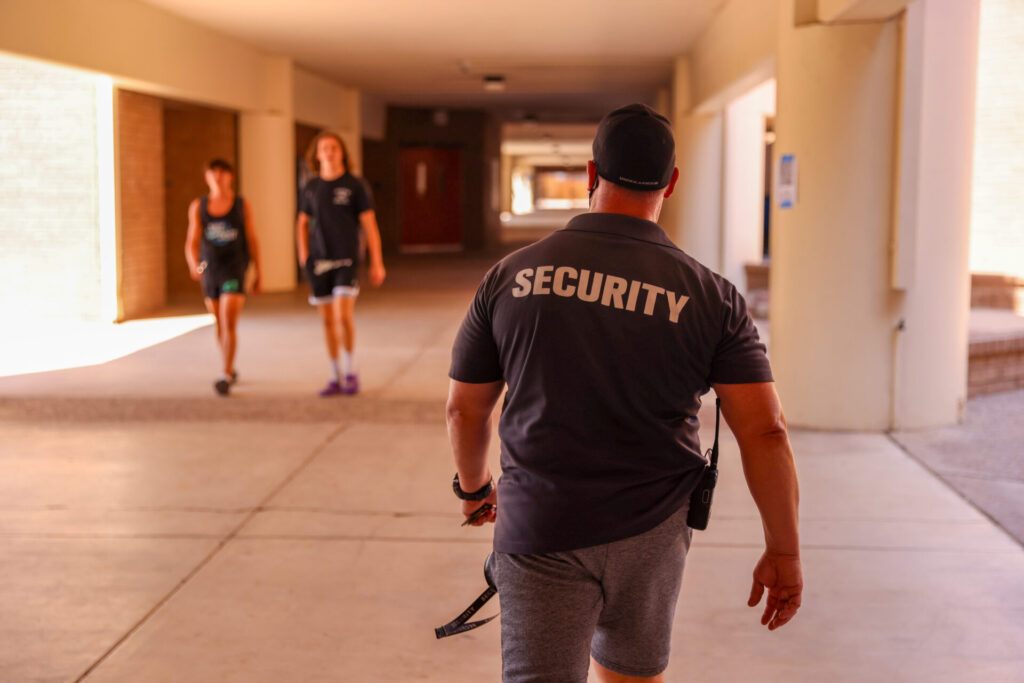NOTE: This is an updated version of a school security story that appeared in Wrangler News last August with new insight and added preparations outlined by Charles Cobbs and TUHSD.
Charles Cobbs assumed his role as director of district safety and security for the Tempe Union High School District in 2019, but due to the global pandemic, couldn’t fully invest in making improvements until a sense of normalcy resumed. Since then, Cobbs says he and his staff have added crucial safety measures that he says have already made a difference.
He has implemented training for teachers, staff and faculty, now upwards of 65 to 70 hours before the start of classes, along with action plans for school-related events and continued relationships with local police that include monitoring social media and preventive measures to help combat drug and alcohol abuse.
That is just the beginning for Cobbs, who says he is willing to do whatever it takes to ensure safety for all at high school campuses. As the start of another school year is looming, Cobbs says there is more in store.
The Arizona Terrorism Information Center, under the Department of Public Safety, carried out threat vulnerability inspections on each TUHSD campus, assessing locks, doors, gates, camera angles and foliage. TUHSD is also using Corona del Sol and Marcos de Niza high schools to test detectors in student bathrooms, aiming to halt the use of vapes and e-pens on campus. Cobbs added that the system is in its trial phase before being installed in all district schools.
Most notably, Cobbs says, his staff has been working to bring updated cameras on campus, which would aid in a surveillance room described as being like a “Batcave,” with Robin manning dozens of screens and controls while Batman confronts any danger. Having a team of civilian police and IT staff working together, they would feed real-time information to first responders in case of an emergency.
“They can sit there and, as officers are responding, they’re getting the information,” Cobbs said. “By the time (officers) get to campus, they know the description of the suspect, where they are at that time, and possibly the number of injuries. Officers will have that information so they’re going right to the threat and not going in blind.”
Through additional discussion with school resource officers, or SROs, who Cobbs works closely with, schools will have updated lockboxes which will hold a variety of content that first responders would need.
“They’ll have card readers; they’ll have maps of the campus. And we’re also going to put a QR code in there that an officer can use to determine the layout of the campus on his laptop or phone.”

The district is looking additionally to install bulletproof coating over selected windows. One intangible element that Cobbs specializes in is relationships. He says he maintains and encourages talks with local law enforcement, and recommends that SRO’s engage with students.
“The relationship building, I think, is the foundation of creating a safe learning environment for our students and our staff,” he says. “If they’re engaging with students—if they’re building relationships, if they’re making themselves open and available—students are going to come to them.”
School security is better prepared than ever before, according to Cobbs, based on his awareness that every child’s life is priceless, a concept that Cobbs, who is also a grandfather, fully understands.
“I think it’s important for staff, students, parents and the wider school community to hear from me that our schools are safe,” Cobbs said. “Not only are they safe, but I want to assure (parents) that we’re going to continue to work hand in hand with our law enforcement partners to evaluate safety protocols and then make the appropriate changes as necessary.
“And I think that’s important that they hear that.”

